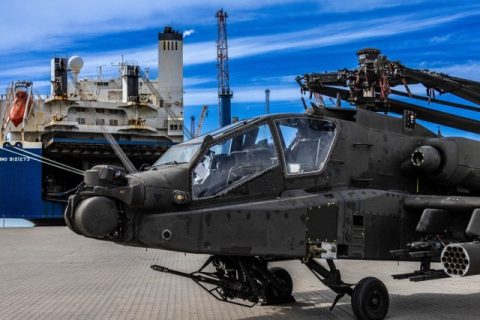
44 American military helicopters arrive in the Port Esbjerg
AH-64 Apache helicopter (Spc. William R. Thompson)
Aircraft, namely 44 military helicopters and equipment from the United States (US) Army arrived in the Danish Port Esbjerg last week. This arrival closely follows the signing of an agreement bestowing upon Esbjerg the position of key transit port for North Atlantic Treaty Organisation (NATO) equipment, and the redistribution of American troops in the Baltic Sea area.
Want to read more?
You have read all of your free premium articles for this month. Please become a subscriber to keep reading.
Subscribe now!
Take advantage of our exclusive offer to get full access to all premium content.





